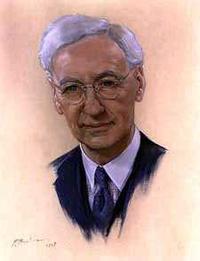What Happened When BC Tried Coalition?

Actually, it worked quite well!
In the weeks leading up to Christmas, the country was amazed and/or appalled at political events in Ottawa as the opposition parties joined forces in a formal coalition aimed at replacing the recently elected minority government of Prime Minister Stephen Harper. Coalitions between Canadian political parties are quite rare, but not unheard of. British Columbia, in fact, enjoys the distinction of having had the longest and most successful coalition government in the country’s history.
In the provincial election in October, 1941, the Liberal Party led by Premier Duff Pattullo, which had governed since 1933, found itself reduced to a minority of seats in the legislature. The Liberals retained 21 seats, four short of a majority, while the Cooperative Commonwealth Federation (CCF), the forerunners of today’s NDP, formed the official opposition with 14 seats and the Conservatives ran third with 12 seats. The CCF won a higher popular vote than either of the other parties in the election and it was mainly to stem the rising tide of support for the “socialists” that the two mainstream parties began to contemplate a coalition, the first in British Columbia history. Advocates of coalition worried that if the minority government fell, precipitating another election, the CCF would quite likely emerge the winner.
Despite this “socialists at the gates” scenario, Duff Pattullo refused to agree to work with the Conservatives. He predicted that coalition would mean the disintegration of his Liberal Party in BC, and he bull-headedly refused to discuss the issue, hoping it would just go away. “No matter what happens,” he wrote in a letter, “I am going to stand my ground.”
But advocates of coalition within his own party would not be denied. They were convinced that another election would be far more disastrous for the Liberals than coalition. Several important cabinet ministers resigned from the government and early in December the party met in convention in Vancouver and passed a resolution calling for a coalition government involving all three parties or, failing that (CCF leader Harold Winch had already said his party would not participate), a partnership of Liberals and Conservatives. When Pattullo refused to endorse the idea and left the convention hall, the Liberals chose former finance minister John Hart as their new leader. On December 9, Pattullo left office and a coalition Liberal/Conservative government took over.
Because the Liberals were the senior partner in the coalition, John Hart became premier, a position he held until 1947 when he was succeeded by Byron Johnson. Cabinet positions were shared between members of the two parties. While it lasted, the coalition was popular with voters. In the elections of 1945 and 1949, Coalition candidates won the overwhelming majority of seats in the legislature and, in 1949, more than sixty percent of the popular vote. If its purpose was to deny power to the CCF, the Coalition was successful.
Finally, in 1952, animosity between Liberals and Conservatives became so strong that the partnership disintegrated. Unfortunately for the Liberal Party, Duff Pattullo’s prediction that coalition would destroy it turned out to be accurate. Following the breakup in 1952, the Liberals went into a nosedive and did not form another government in BC until 2001. Mind you, coalition was no friendlier to the provincial Conservatives. They, too, were decimated in the 1950s by the rise of Social Credit and have never recovered.
History does not repeat itself, but it is interesting to compare the BC experience with present-day events in Ottawa. There are several similarities:
- in both cases, a recent election placed a minority government in power.
- support for coalition was/is sparked by an international crisis. In 1941 it was the world war; today it is the dire global financial situation.
- supporters of coalition claimed to be non-partisan while playing a highly partisan political game. In 1941 the coalition was aimed at denying power to the CCF, which was considered dangerously left wing; today the coalition is aimed at removing from power a Conservative government which its opponents consider excessively right wing.
Only time will tell whether the coalition between the Liberals and the NDP in Ottawa, even if it survives the next few weeks, will prove to be anywhere as durable as the Liberal/Conservative partnership that governed BC for eleven years.
